Materials
A modern blacksmith generally works with mild steel. I can also work with wrought iron for restoration projects. Other materials can also be incorporated into a design to add colour, texture, contrast, reflect light/images or to help the function of the piece. Other materials include coloured and plain glass, wood, stone, mozaic tiling, copper, stainless steel, brass and bronze.
Techniques
Blacksmiths, mainly over the past 3000 years, have invented various techniques to work the material in different ways. The techniques are performed when the material is hot and malleable and include forging [spreading, drawing down and upsetting], splitting, punching, twisting, bending, dishing, fire welding, heat treating [normalising, annealing, case hardening, hardening and tempering] and joining [rivets, collars and mortise and tenon joints]. All these techniques can be used individually or combined together to create a rich and infinite variety of functional and decorative items. Using the techniques and the heat from the fire the iron becomes malleable and the blacksmith becomes free to do what he likes and, more importantly, what the client likes.
Techniques used while making a bird head from 12mm square mild steel
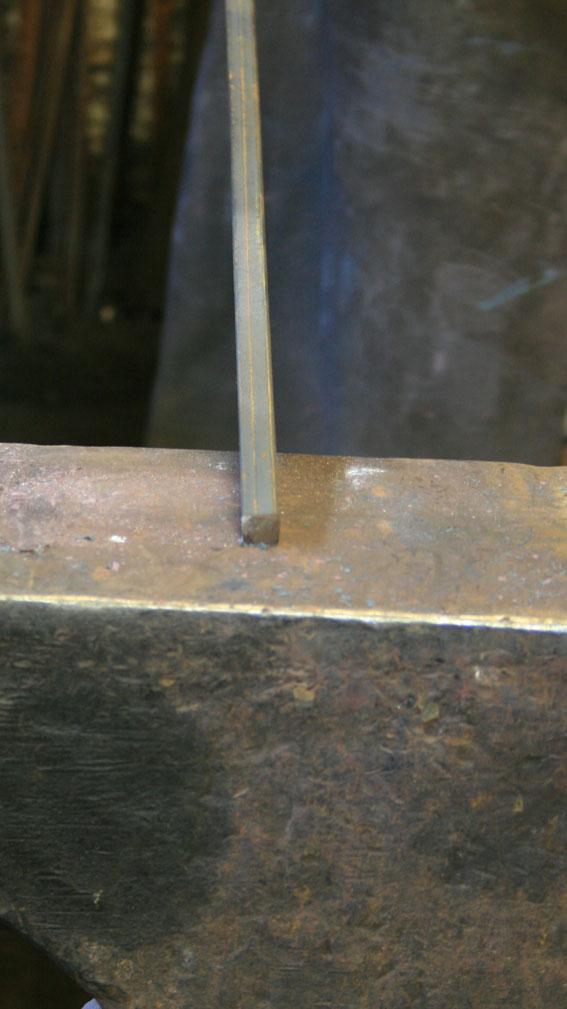
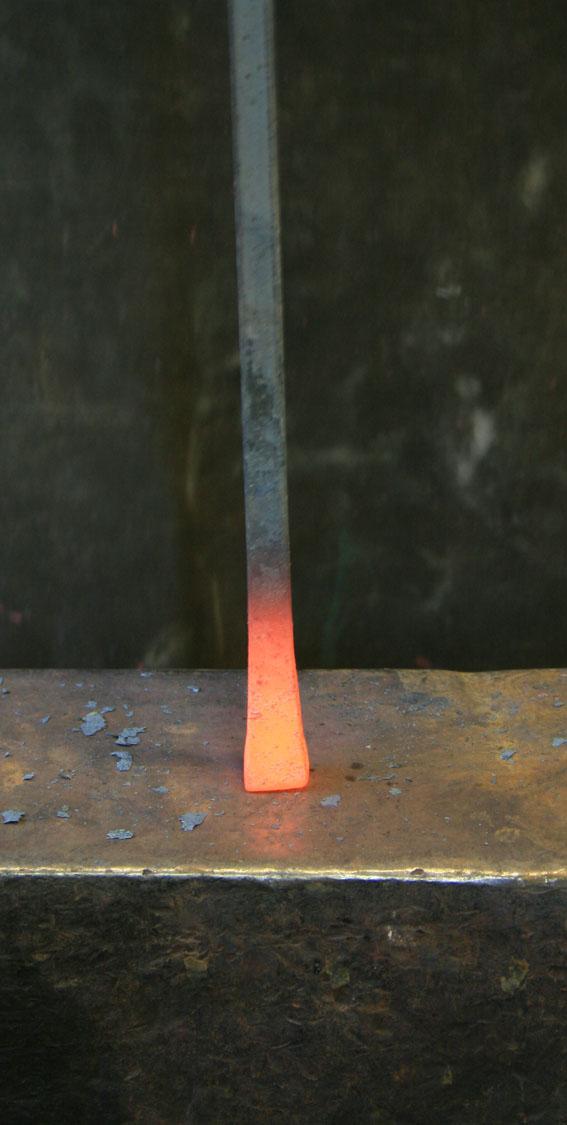
Upsetting - squashing down the bar to add more material for the feathers
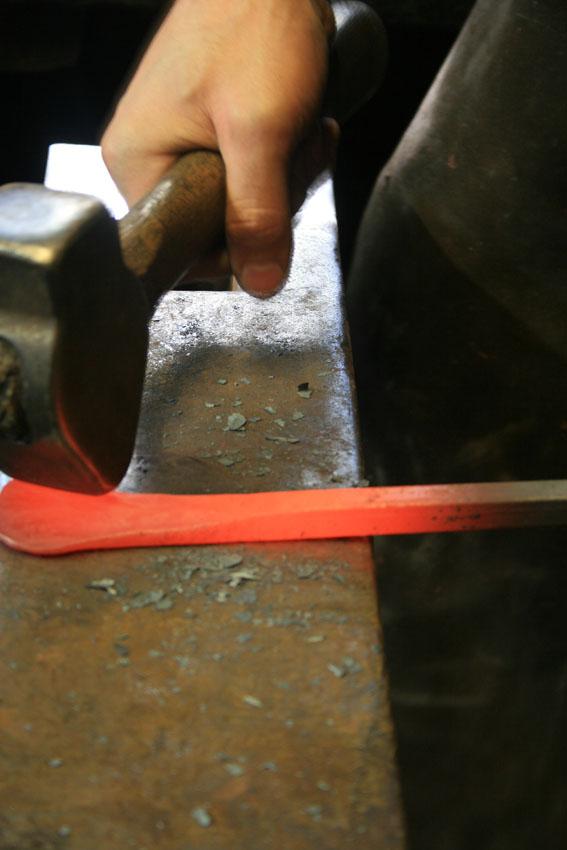
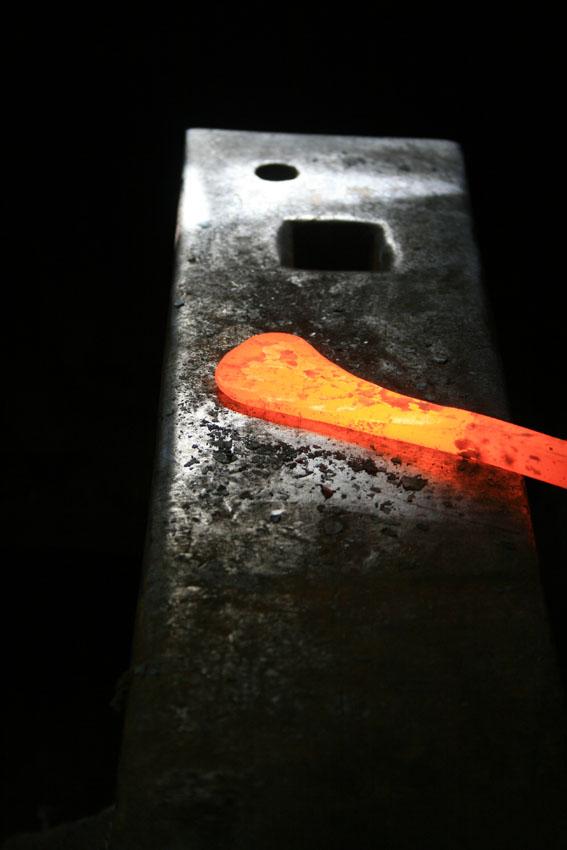
Spreading - moving the material [that has been upset] to the sides with the cross pein
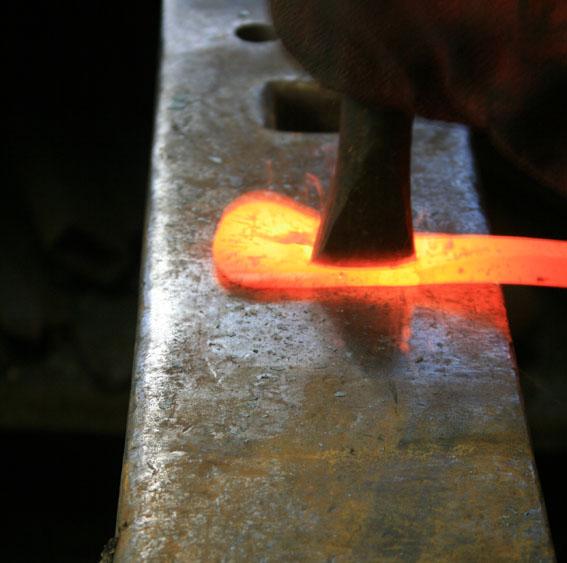
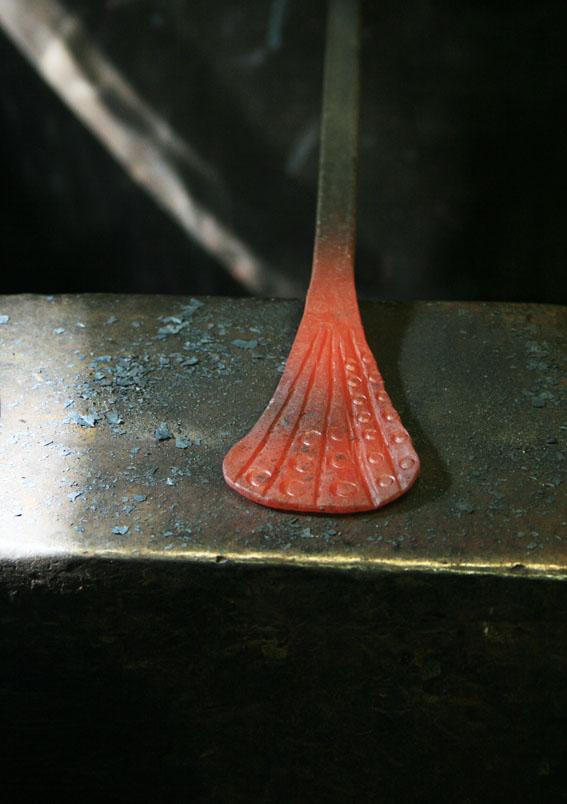
Marking patterns with the chisel and O punch
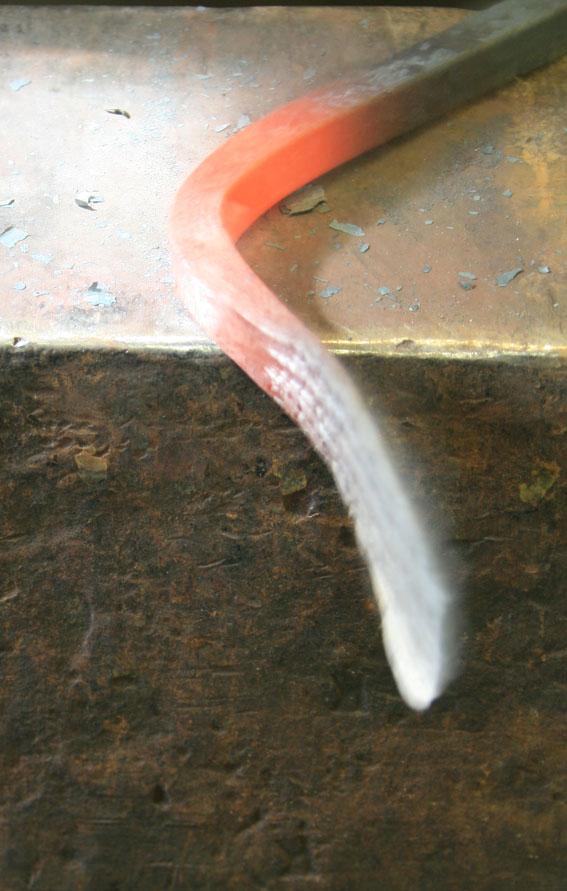
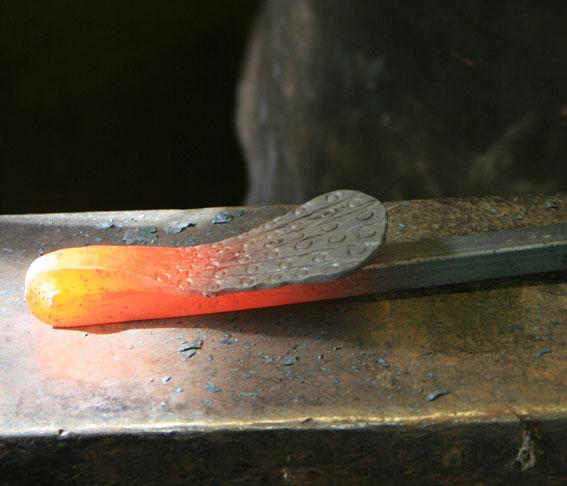
Bending the bar in preperation for fire welding the beak
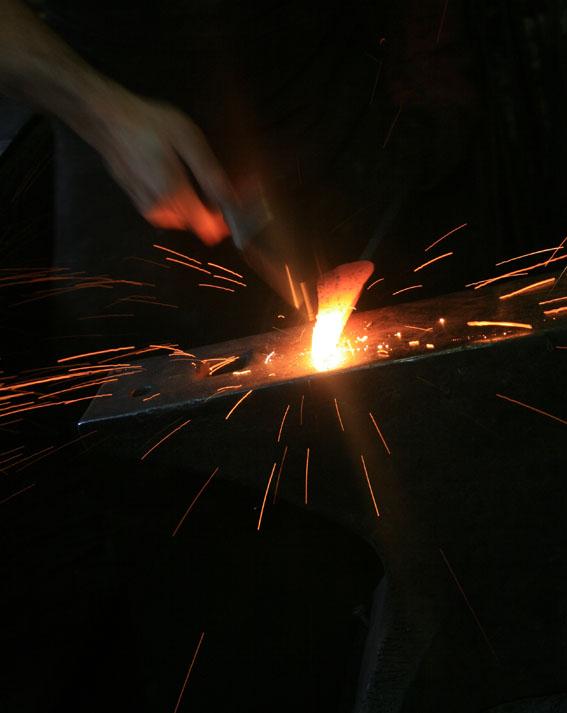
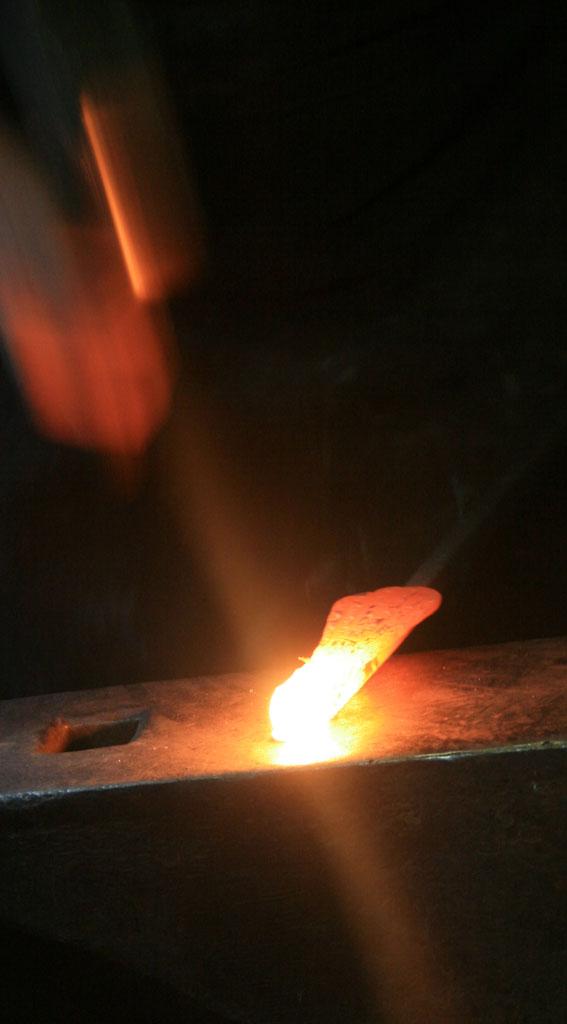
Fire welding the fold together by heating the bar up to melting point and tapping it together so it joins into one piece - amazing metal!
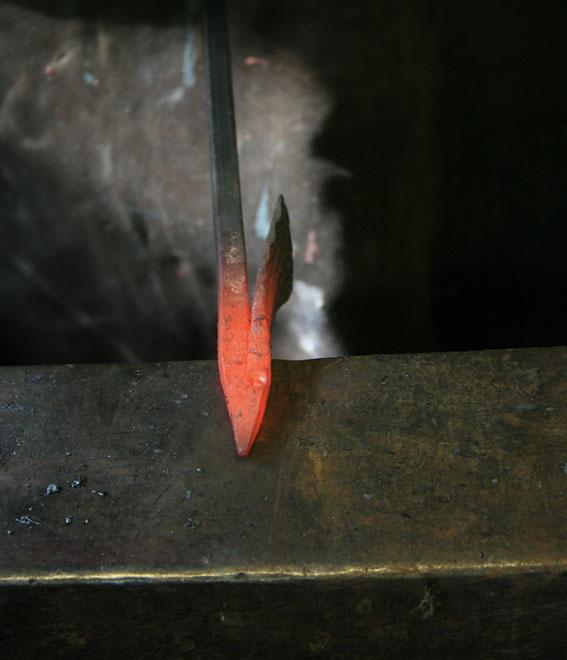
The bird after fire welding and marking the eye with the O punch
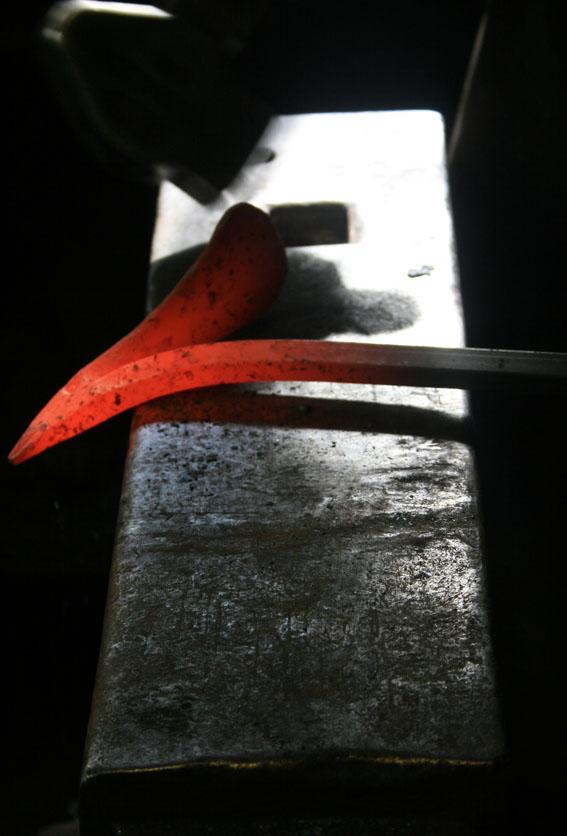
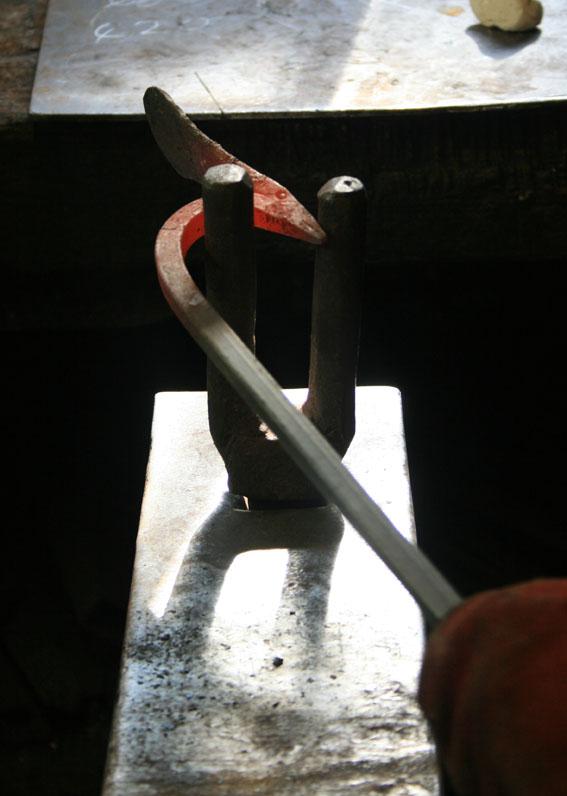
Bending the head round over the edge of the anvil and using the hardie wrench/pegs
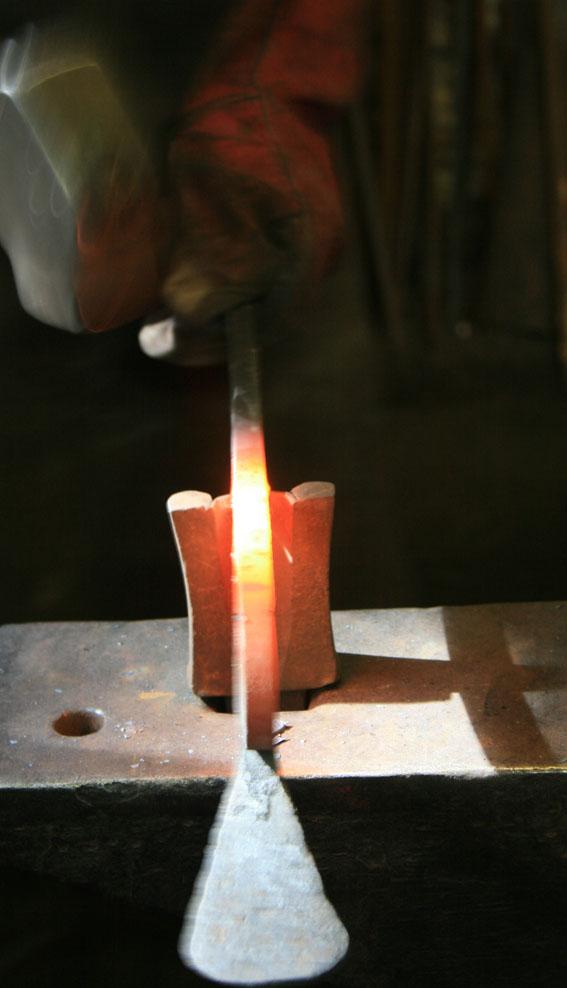
Cutting on my curved cut off hardie tool
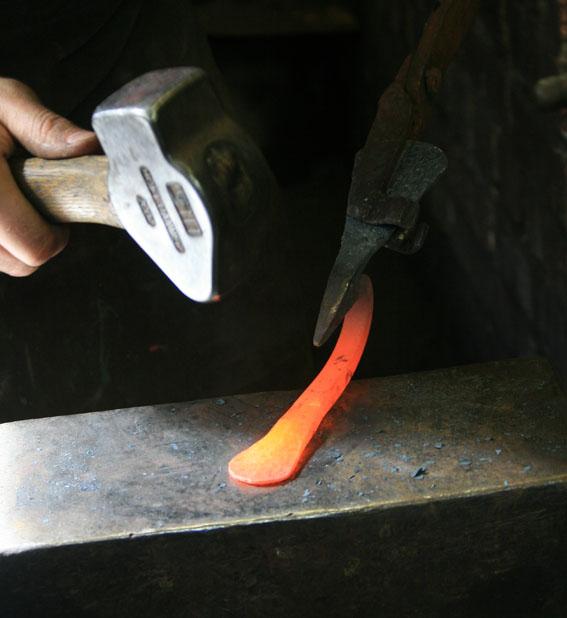
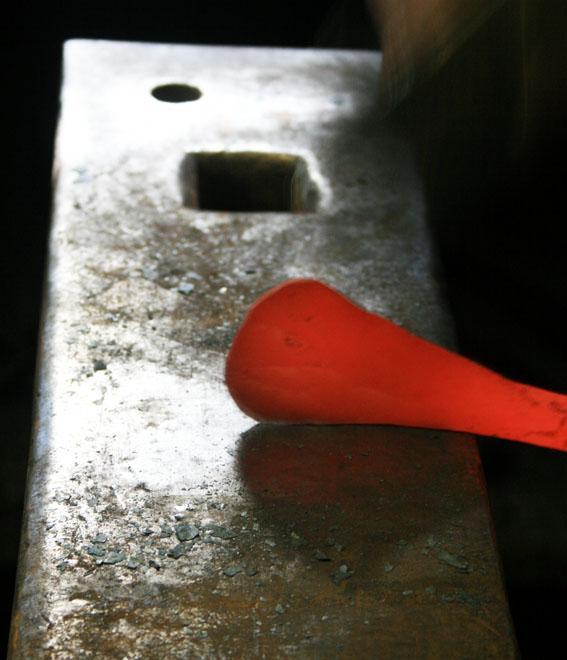
Spreading and shaping the end once it has been cut off
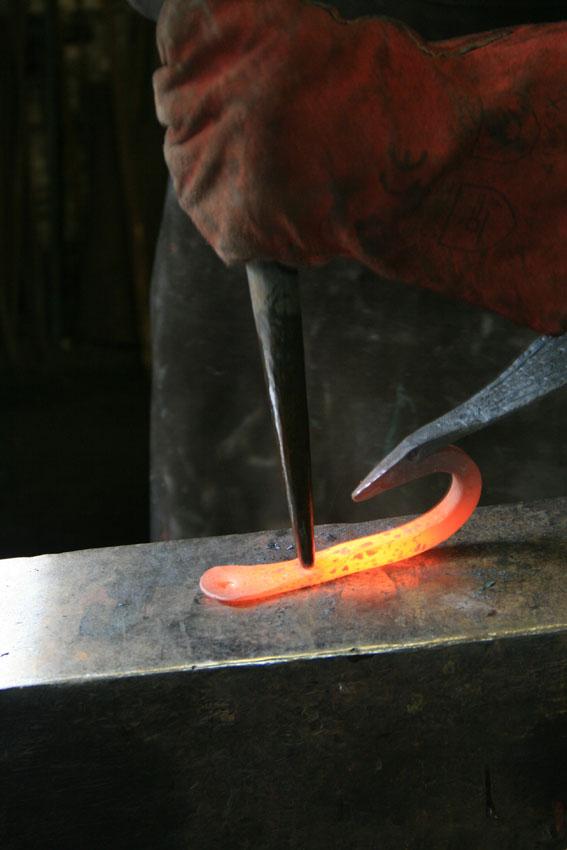
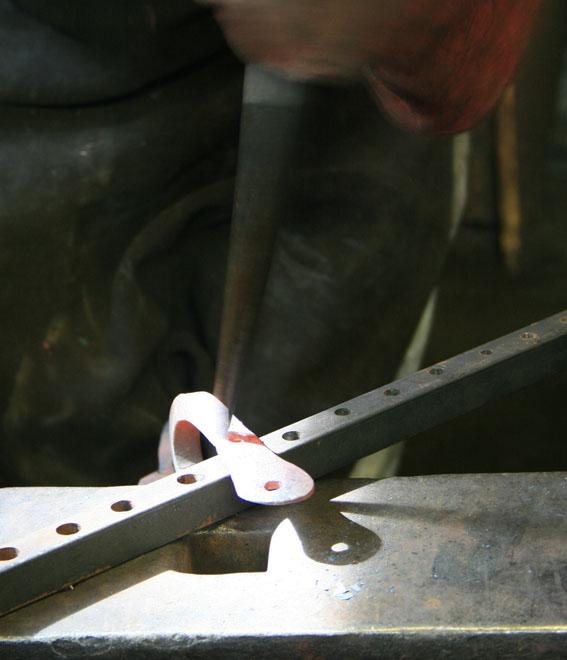
Punching the holes in by hitting an impession on one side then turning it over to pop a hole through
Other techniques
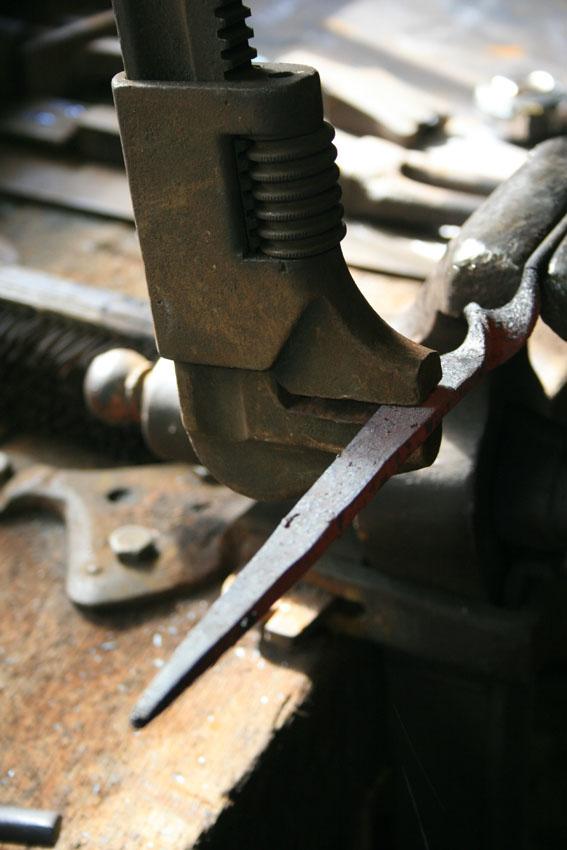
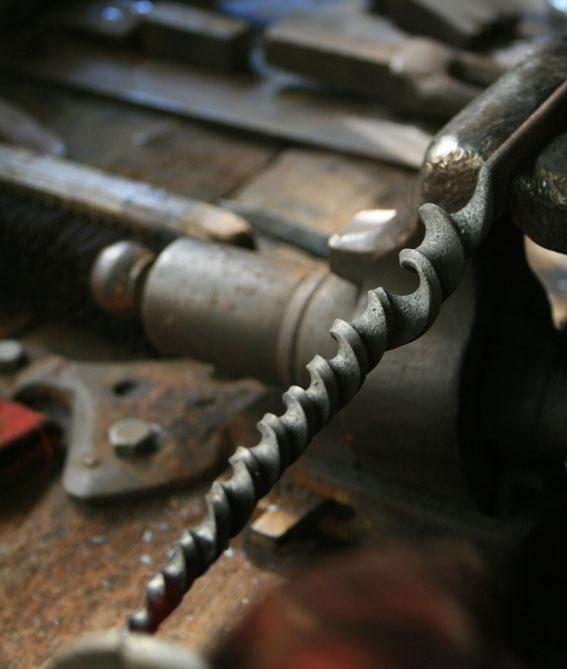
Twisting flat bar. Simlpy turn with the wrench and the corners or groves create the pattern
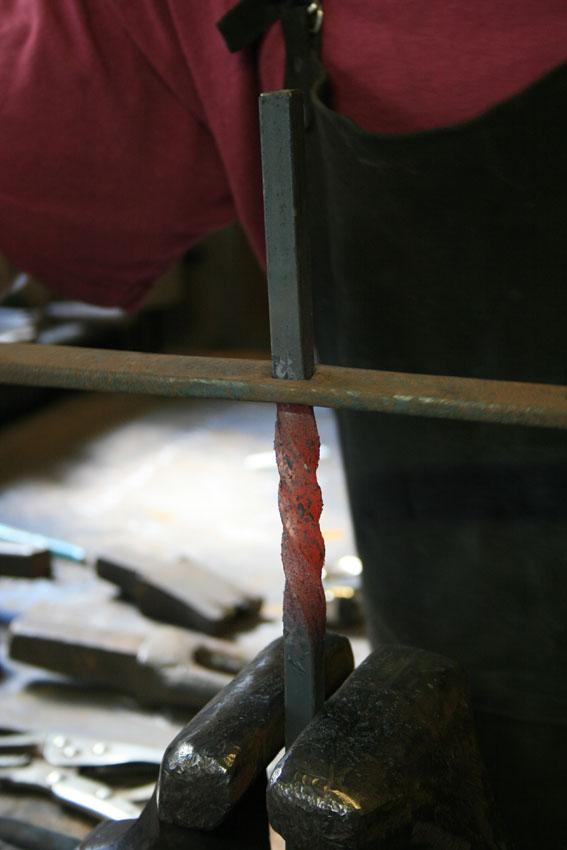
Twisting square bar
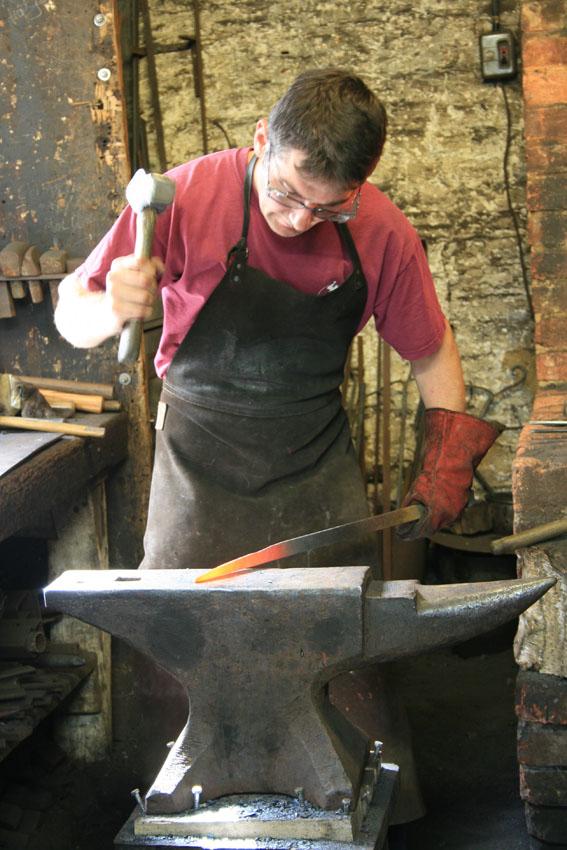
Drawing down - a forging technique [along with spreading and upsetting] where I am changing the section of the metal between the hammer and anvil
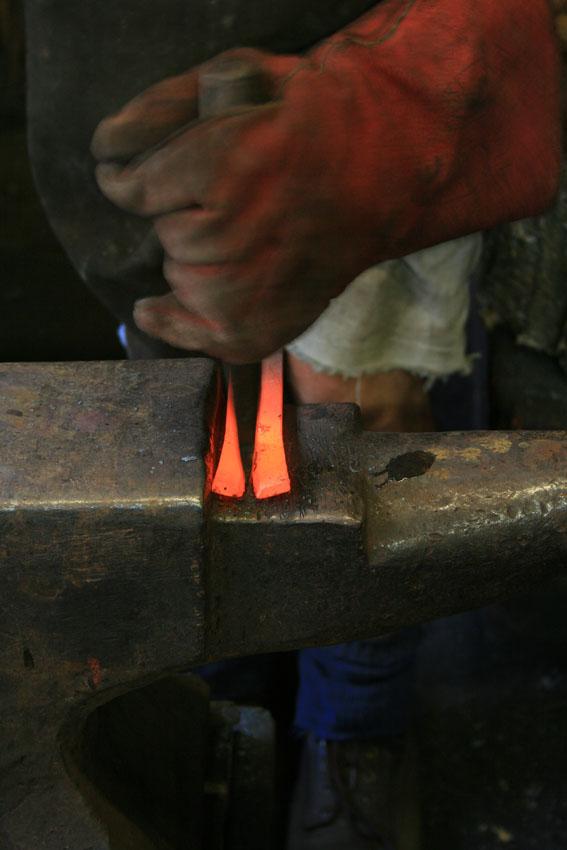
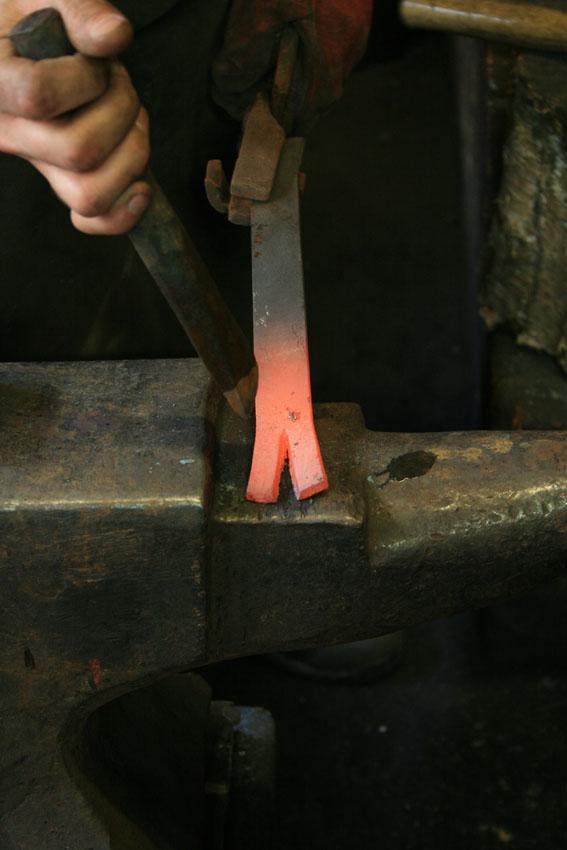
Splitting the metal with a chisel
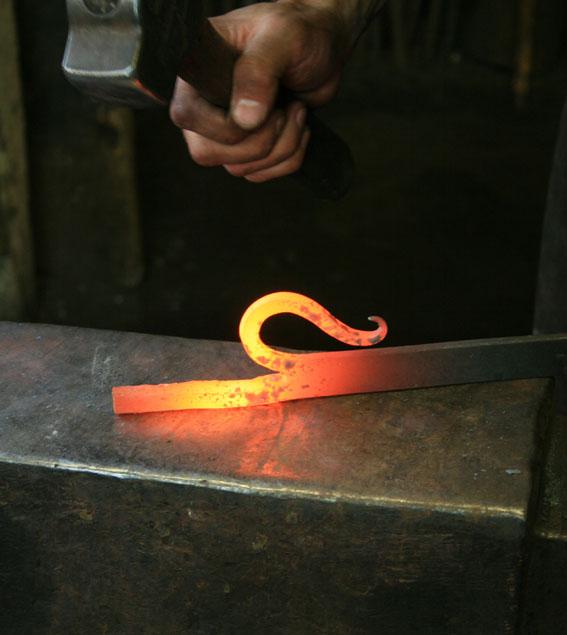
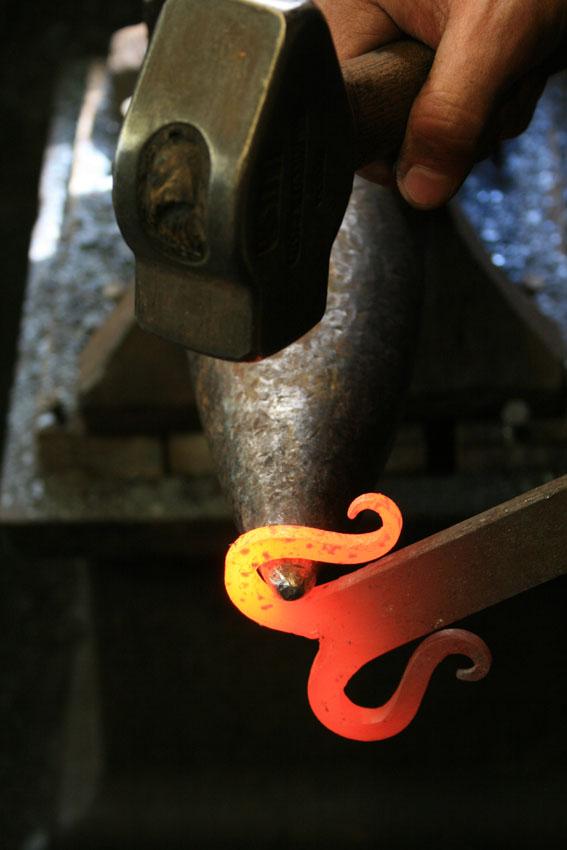
Drawing down/Forging the split into a point/taper then bending over the bic
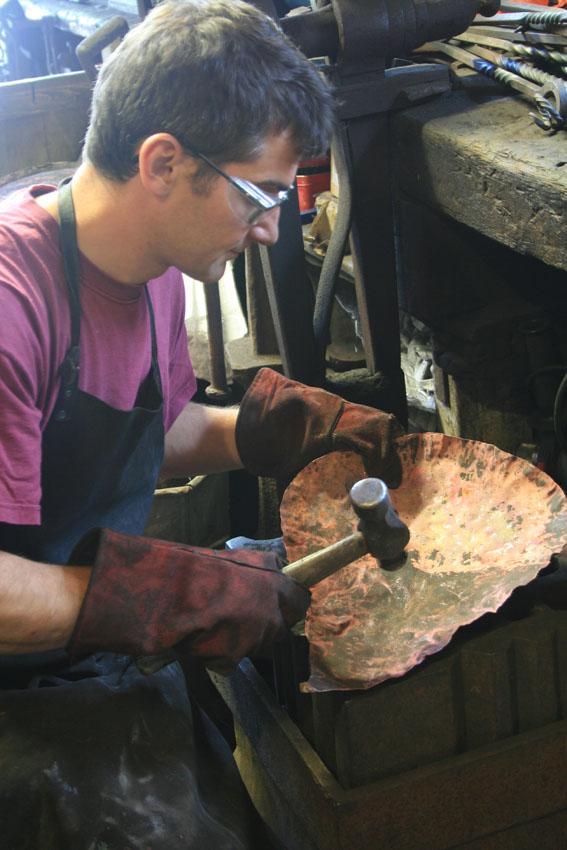
Dishing the copper on the swage block. The swage block is handy for dishing as I can use all the hollow areas to hit the sheet down into. It also accepts my tin smithing tools so I can planish it [hit the bumps down and smooth it off]
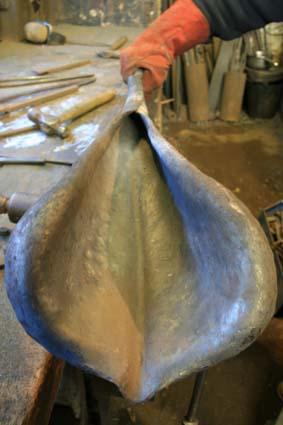
This bit of sheet metal has been fullered, dished and bent